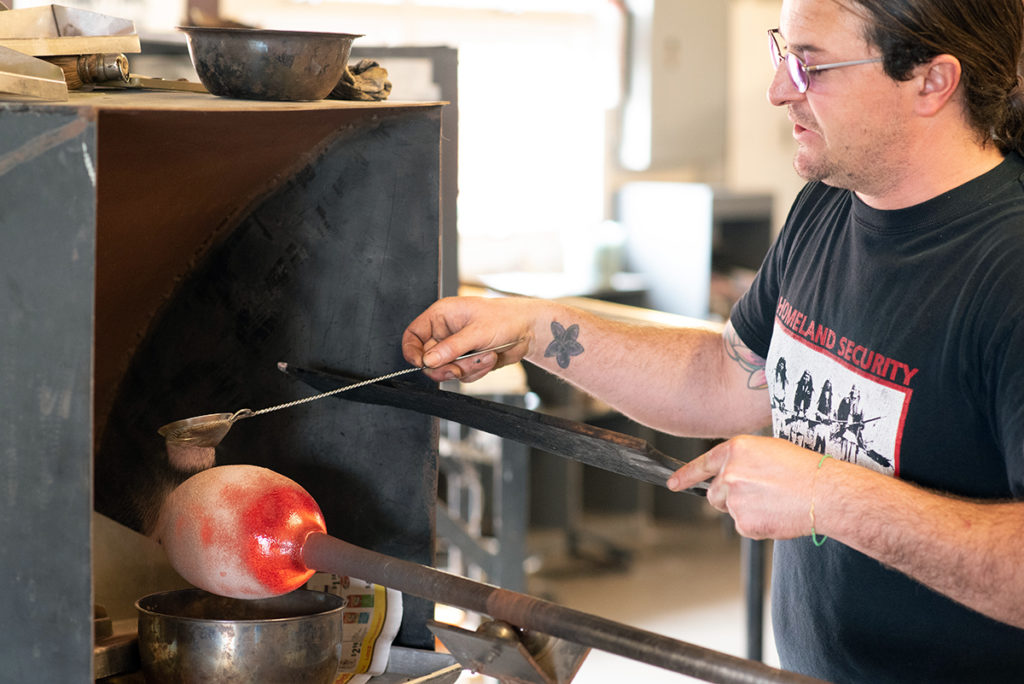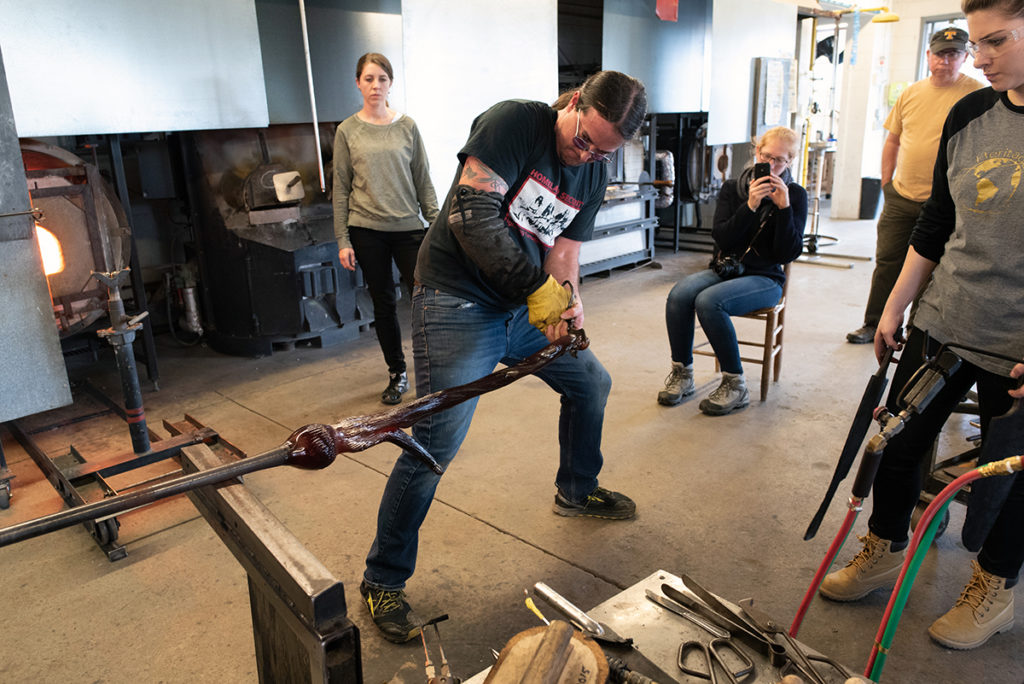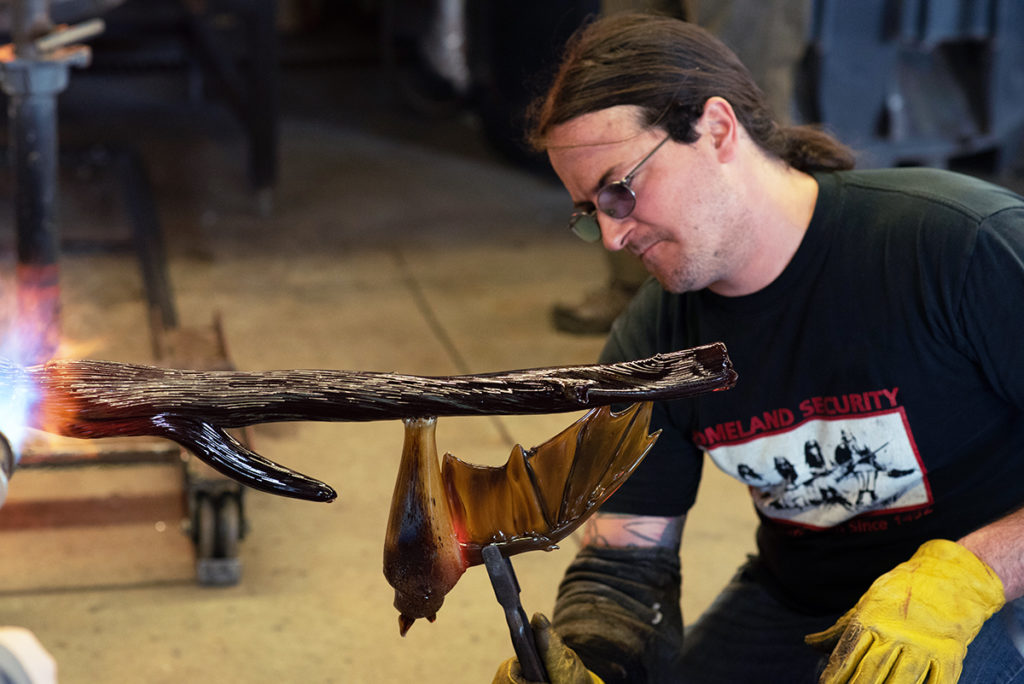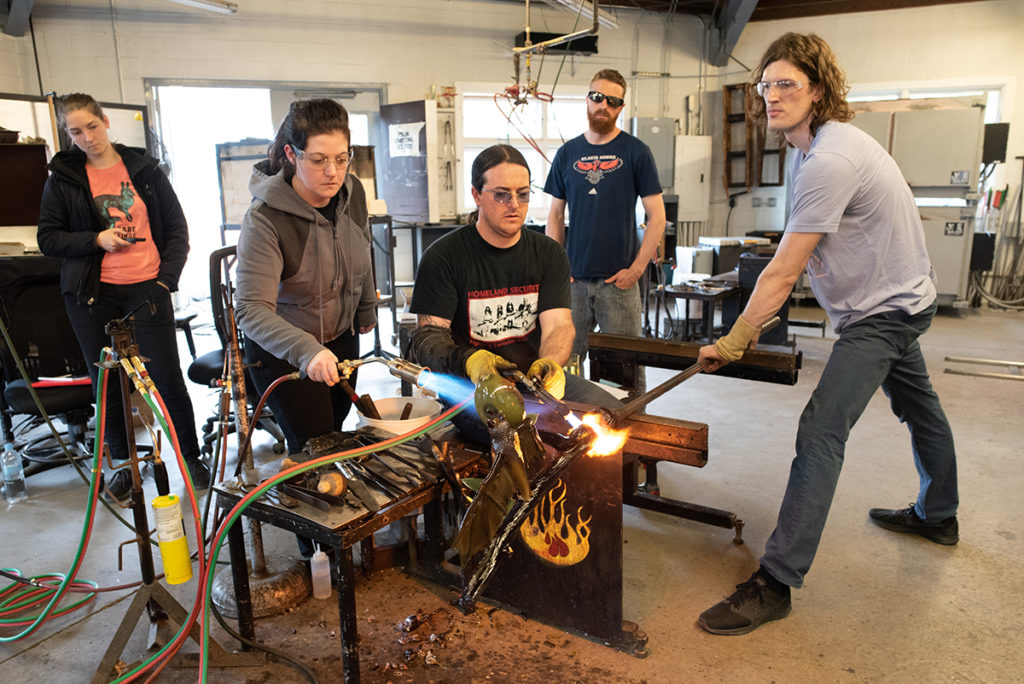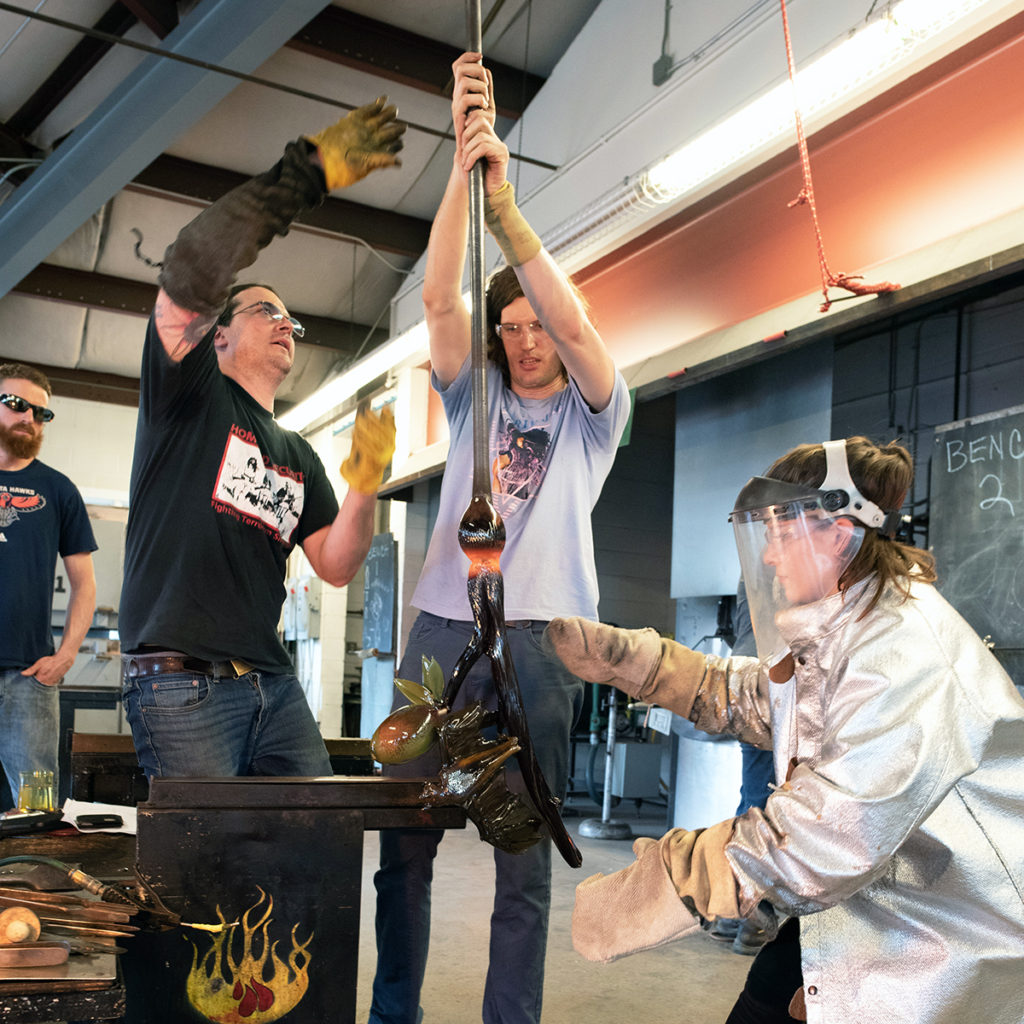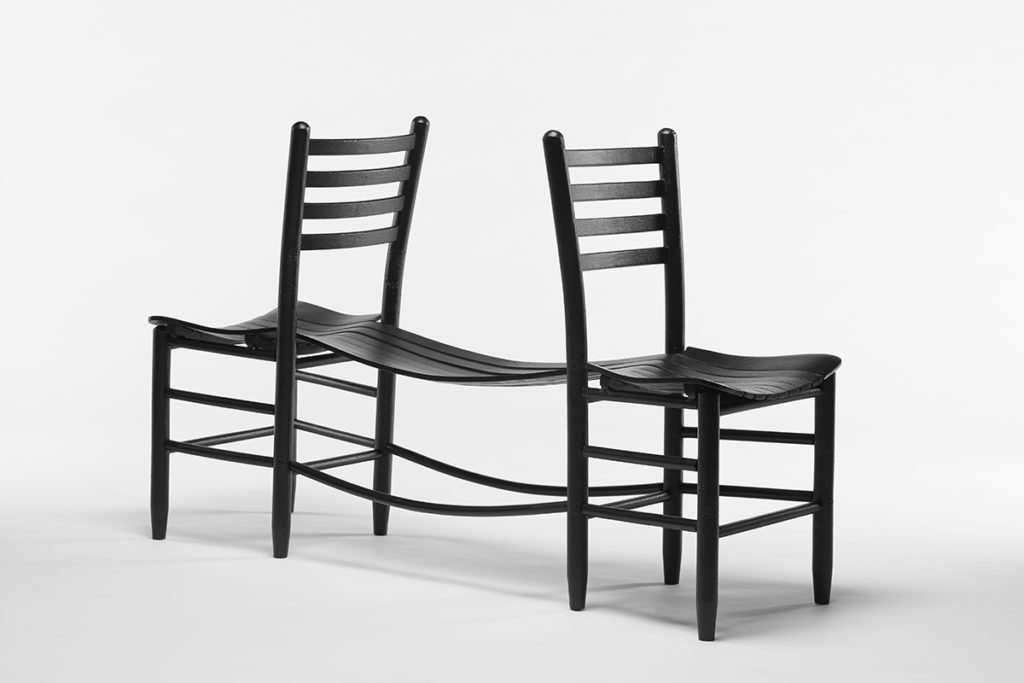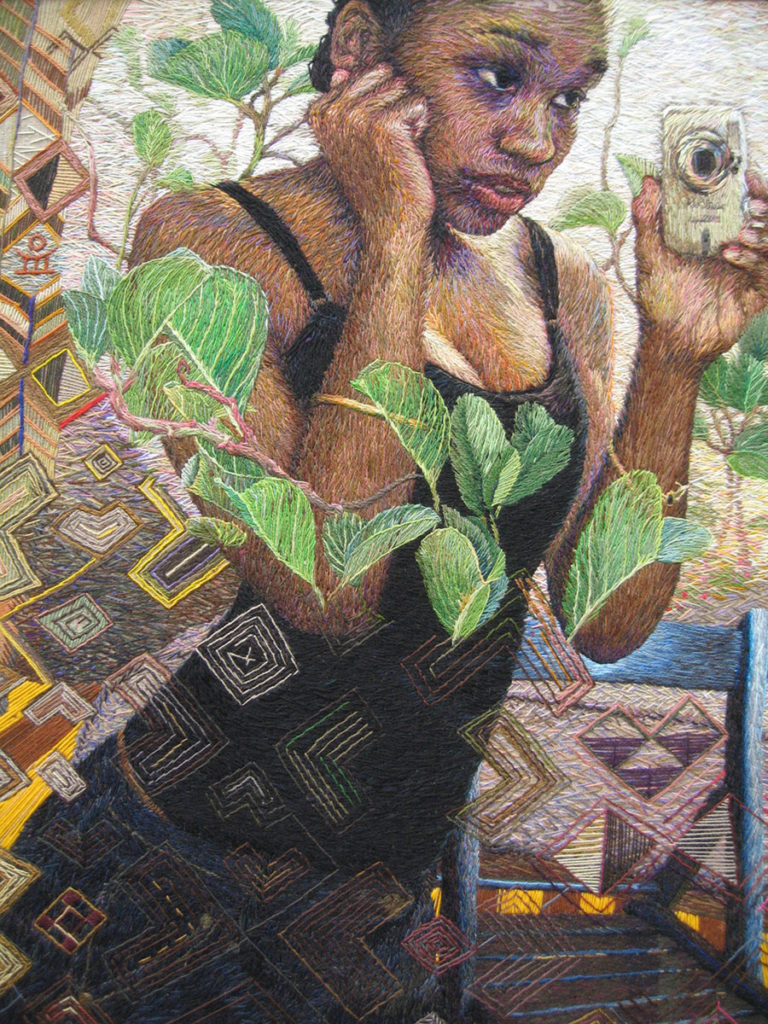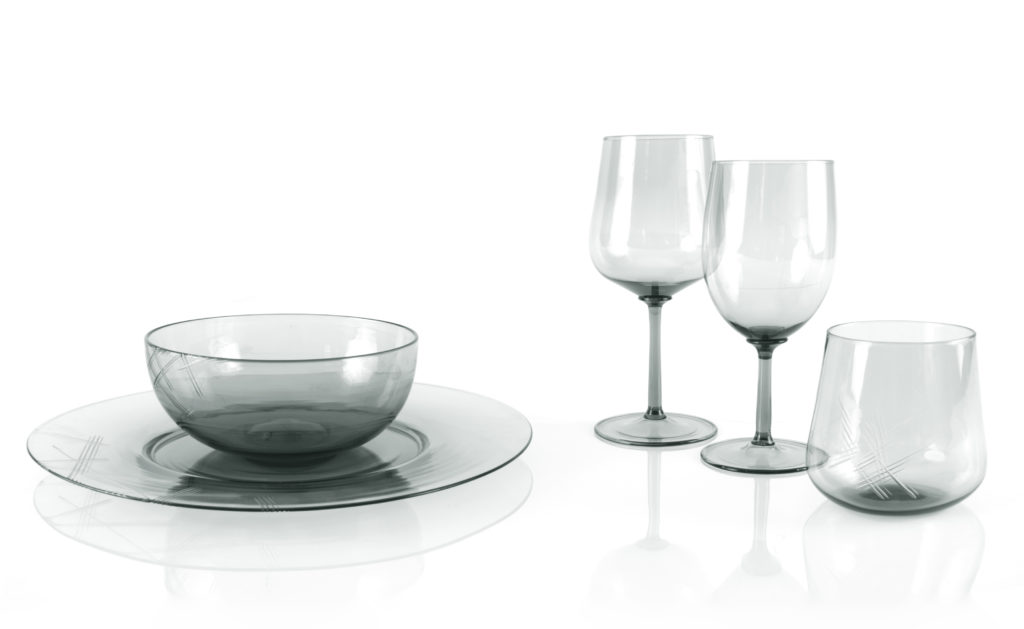Eight weeks of Penland fall concentrations have come and gone. We’ve shared lots of studio photos and show-and-tell photos and photos of the goofy moments in between. But there’s a lot that’s constantly happening during concentrations that is harder to pin down—the messy, beautiful, confusing, triumphant work of learning and connecting and growing.
As we’ve heard again and again from students, time at Penland is not just about a handmade mug; it’s about the transformational power of learning to make a mug with your hands. Below, we illustrate some of the less tangible aspects of creative immersion with a photo from each of our recent concentrations.
Focus
Clay student Brian Chen adds surface decoration to a run of tumblers using a masking technique he learned from instructor Tom Jaszczak. Freedom from distractions is one thing that leads to such leaps in student work in just eight weeks.
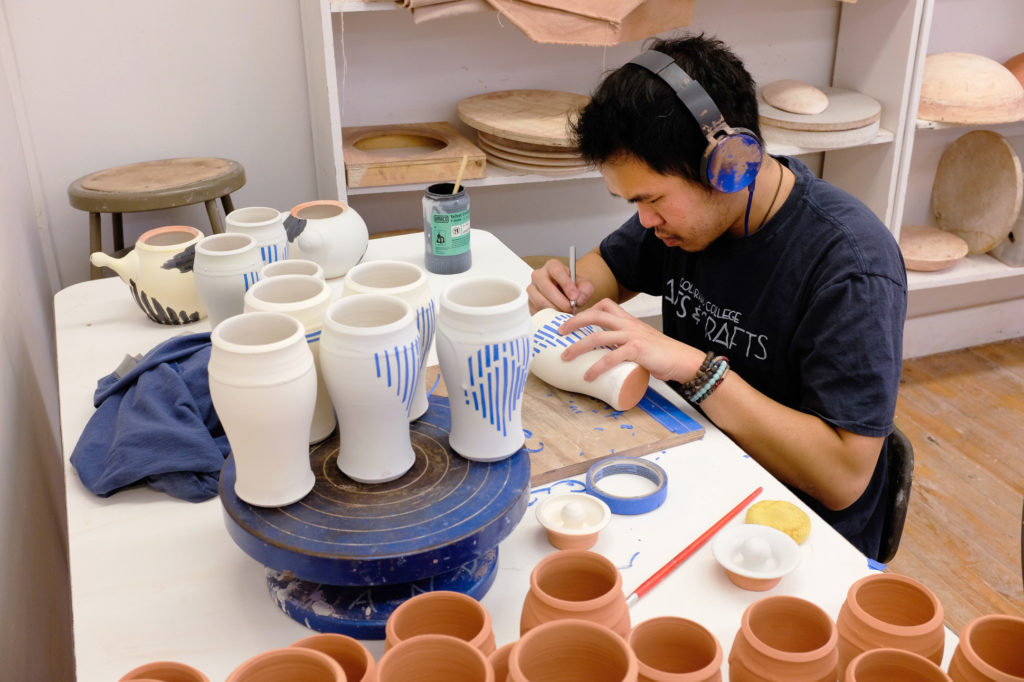
Teamwork
Studio assistant Eric Meeker uses a drop or two of water to break his piece from the punty while core fellow Joshua Fredock stands ready to grab it. The nature of glassblowing is a team effort, but students in all studios benefit from the feedback, energy, and expertise of their peers.
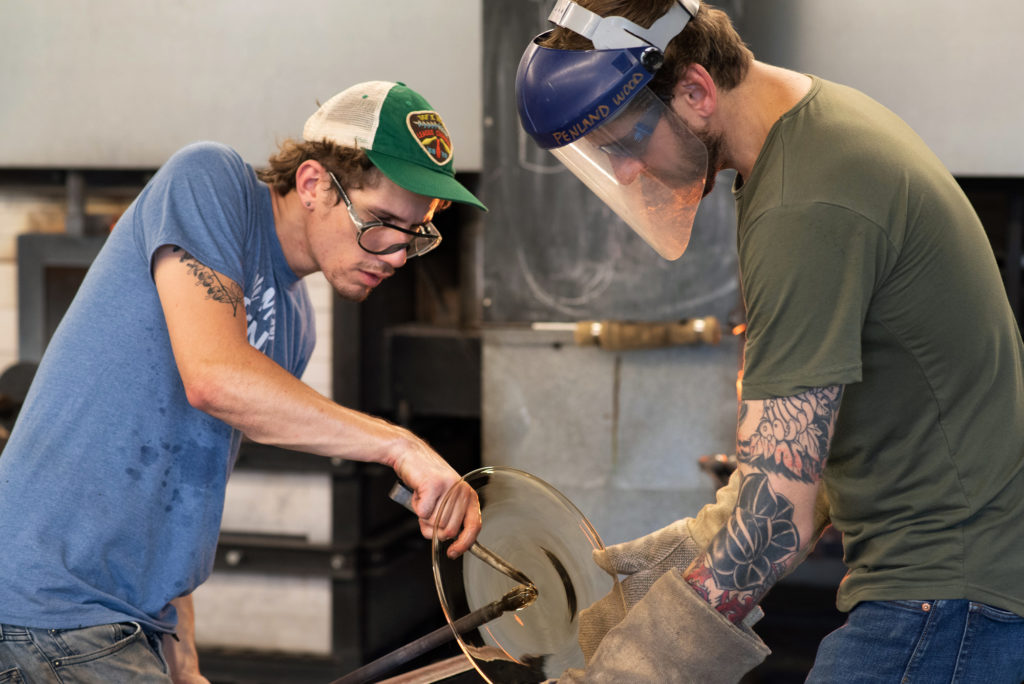
Process
Textiles student Emily Parkinson builds up pattern on a length of printed yardage through the careful spacing and layering of screens. The sketches, calculations, and in-betweens aren’t always readily apparent in a finished piece, but that step-by-step process is integral to the outcome.
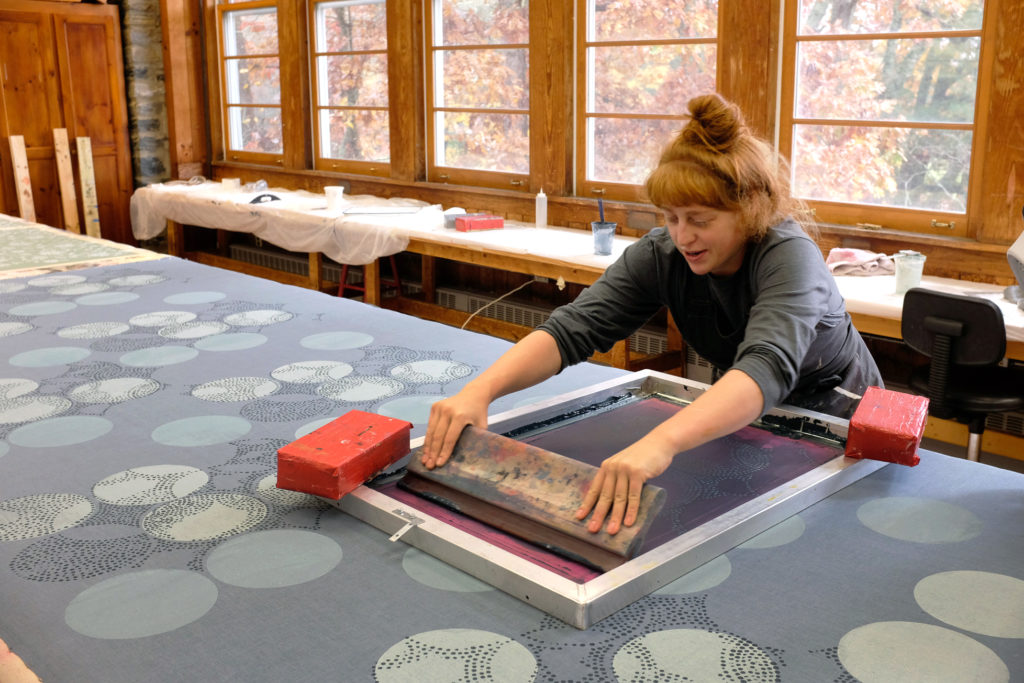
Repetition
Henry Rogers heats a length of steel in the iron studio. Over the course of eight weeks, students move between the forge and the anvil and back again hundreds of times. Each heat builds intuition and muscle memory, and every swing of the hammer builds accuracy and control and confidence. It’s the hours of practice that transform a beginner into an experienced maker.
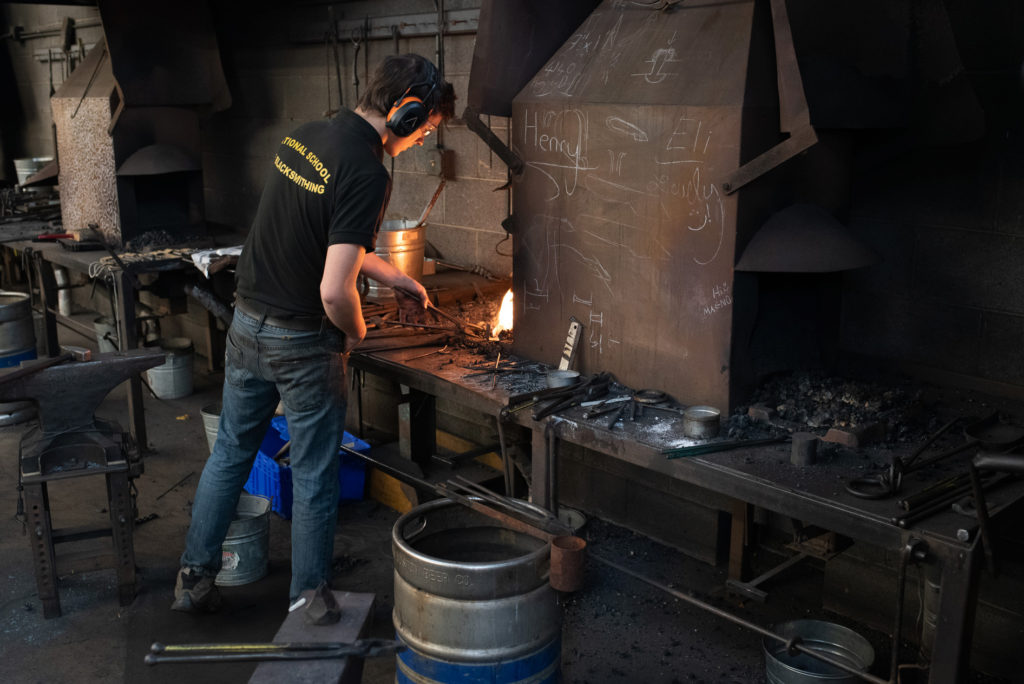
Inspiration
Hannah Roman works on a painting in her Color & Abstraction workshop surrounded by sketches, previous work, and a giant collaborative still life for reference. Ideas can crop up in the most unexpected places, be it something a fellow student is trying, a process in another studio, the landscape of the Penland campus outside, or maybe just the shadow your water bottle casts across your desk.
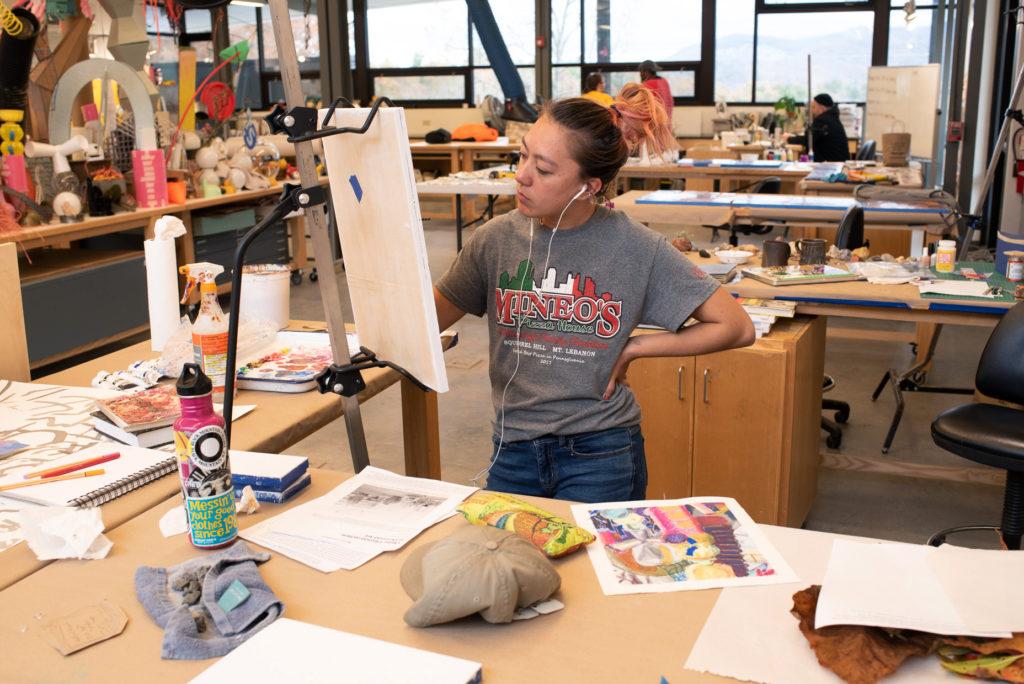
Growth
First-time woodworker Ann Ritter glues tenons into the aprons of her table with instructor Wyatt Severs. Even students who have never touched wood or metal or clay can become proficient over eight weeks of immersive studio time, and this growth sometimes opens up entire new futures and dreams.
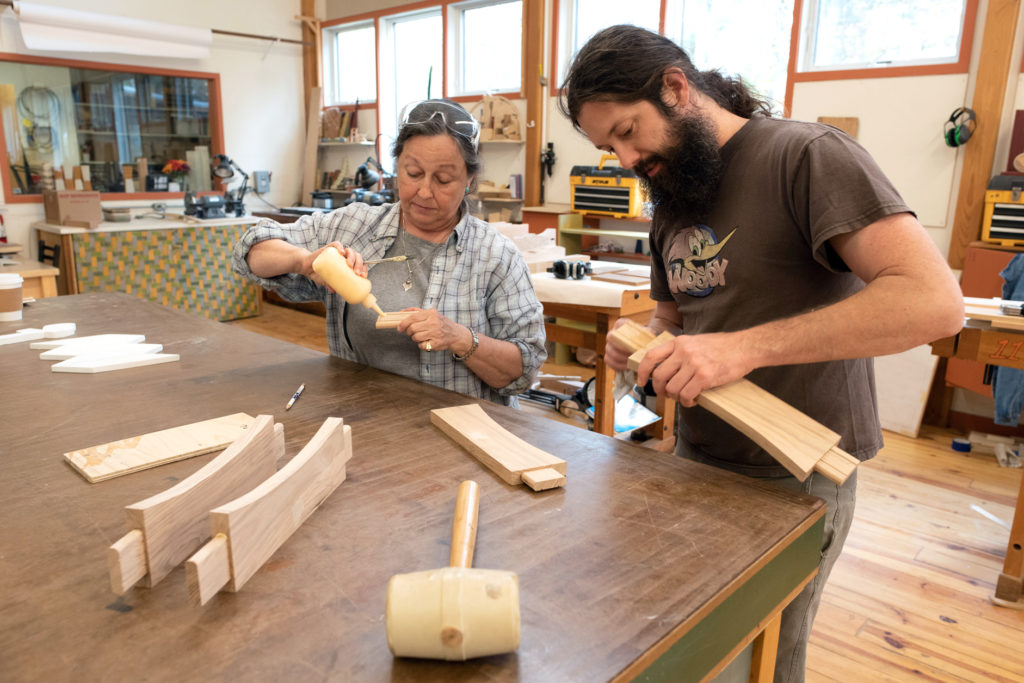
Attention
Core fellow Stormie Burns pulls a run of prints on the Vandercook press. Like a lot of making, it’s a repetitive process that benefits from quiet attention and an ability to be present in the moment. There’s a joy that comes from being immersed in the details.
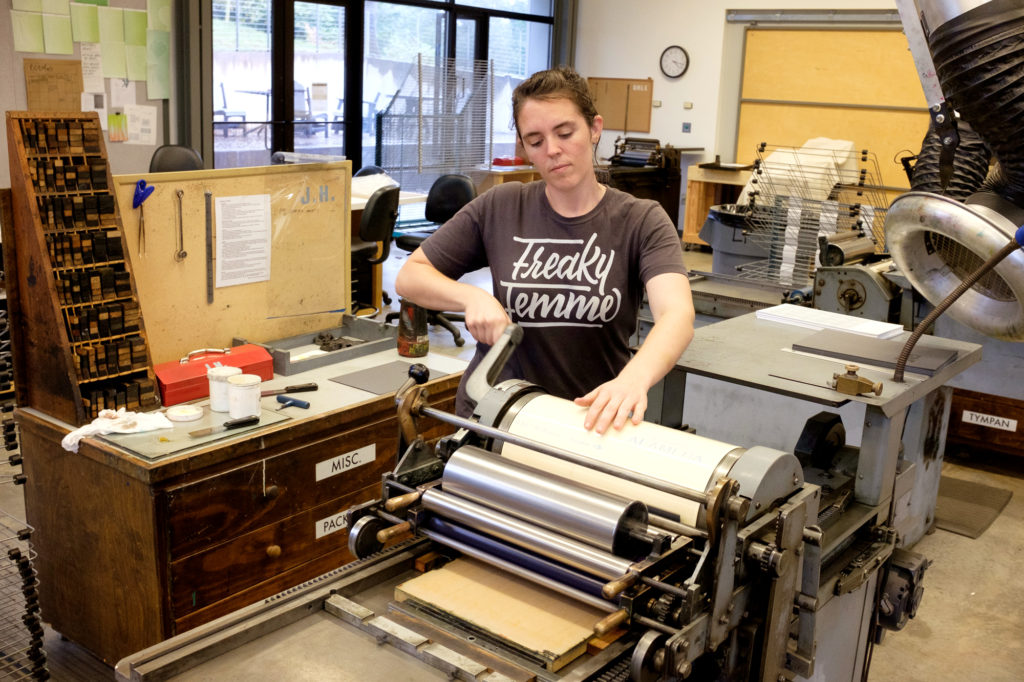
And a few things not pictured above:
The Penland friendships each student will carry with them. The newfound confidence and sense of belonging. The deeper appreciation for hands and material and time. The ideas that started here as mere sparks and are now burning brightly across the web of our community.
To all our fall concentration students and instructors, thank you for reminding us about the importance and beauty of what we do here. And to all those who would like to be students, we hope you will be! Registration is currently open for Spring 2019 concentrations and 1-week workshops.


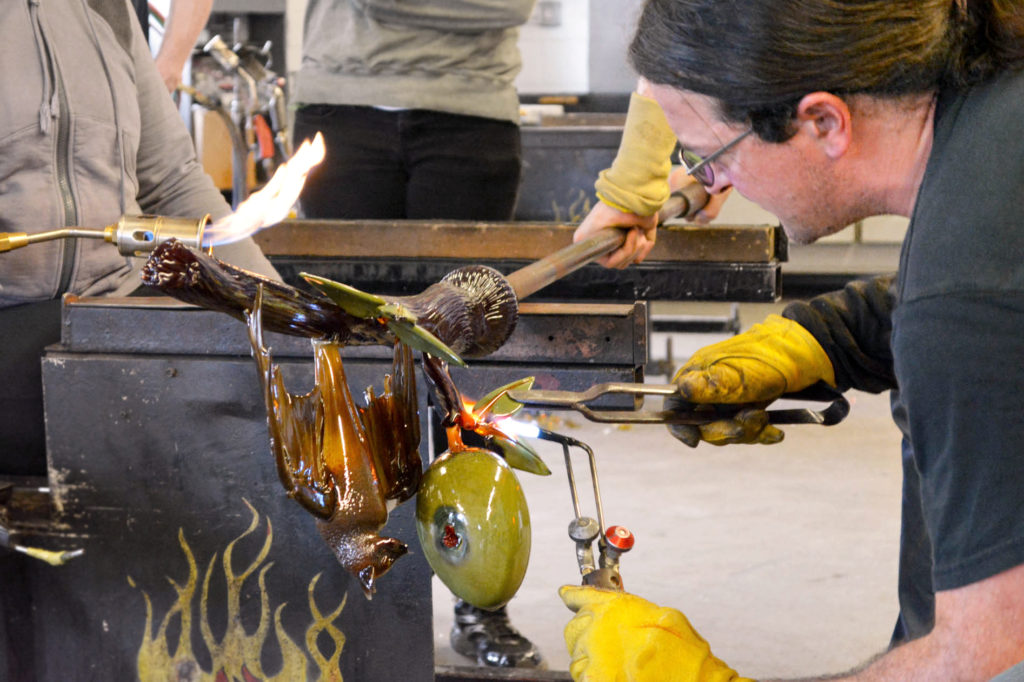
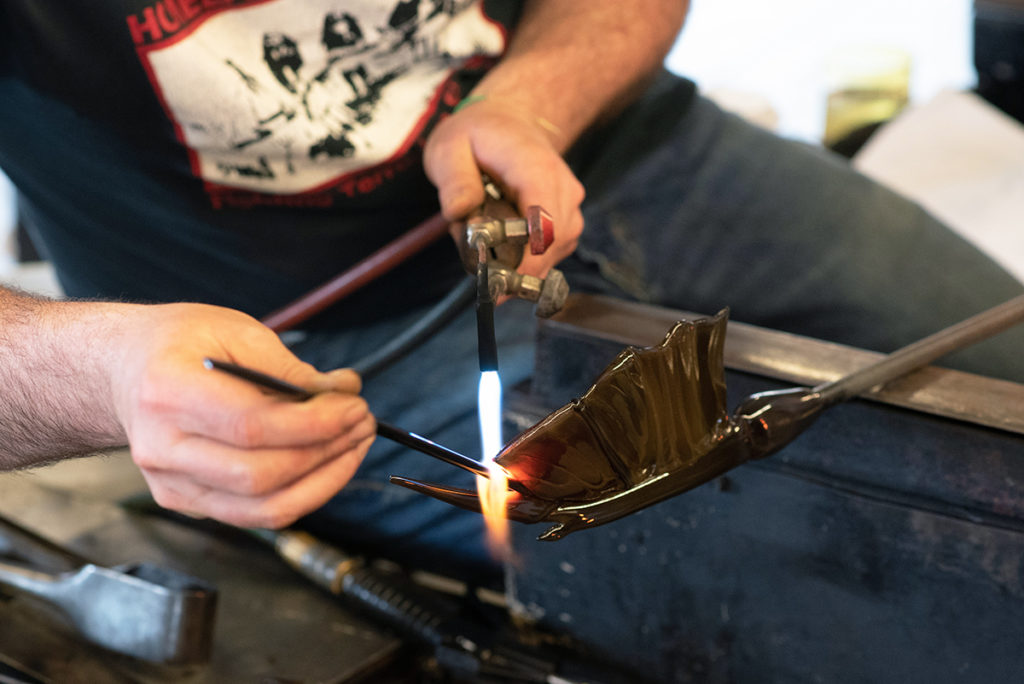 The sculpture came together piece by piece over the course of the morning. Raven crafted each element separately—the leaves on the tree, the mango, the bat’s body, the two wings—and each of those pieces were built up from even smaller ones. To make the wings, for example, Raven added a small blob of hot glass onto a curved and colored spine, stretched and flattened it into the thin membrane of the wings, and then added a darker rib with a carefully controlled piece of cane. He repeated this process across the spine of the wing—membrane, rib, membrane, rib—until he had created a ruffling and expressive thing that had all the veining and texture you might find on a real bat.
The sculpture came together piece by piece over the course of the morning. Raven crafted each element separately—the leaves on the tree, the mango, the bat’s body, the two wings—and each of those pieces were built up from even smaller ones. To make the wings, for example, Raven added a small blob of hot glass onto a curved and colored spine, stretched and flattened it into the thin membrane of the wings, and then added a darker rib with a carefully controlled piece of cane. He repeated this process across the spine of the wing—membrane, rib, membrane, rib—until he had created a ruffling and expressive thing that had all the veining and texture you might find on a real bat.